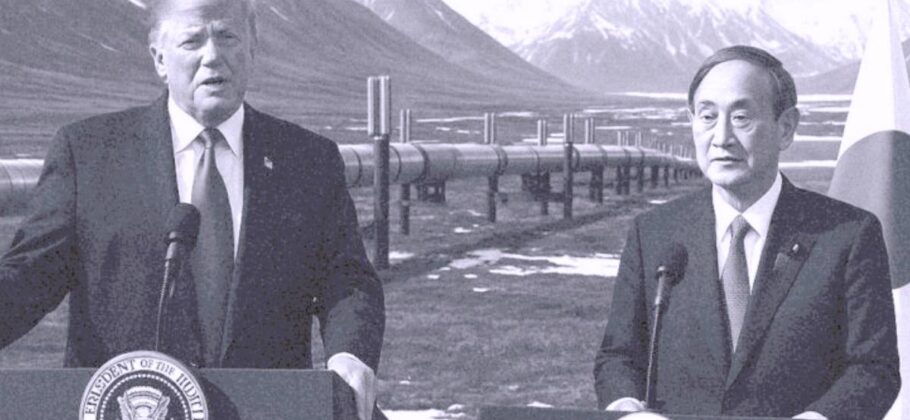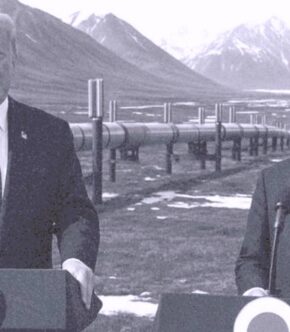President Donald Trump has unveiled what energy officials are calling one of the most significant infrastructure projects in U.S. history: a massive liquefied natural gas (LNG) pipeline project 807 miles long from Prudhoe Bay on the Arctic Ocean and run down to Nikiski. The announcement, made alongside Japanese Prime Minister Shigeru Ishiba and key members of Trump’s administration, signals a renewed push for what the President has long described as “American energy dominance.”
A Strategic Alliance to Unlock Alaska’s Energy Potential
At the heart of the plan is a partnership between Alaska LNG – a branch of the Glenfarne Group – and global energy technology leader BakerHughes. The alliance will bring advanced LNG compression and carbon-capture technology to a project that has been decades in the making. Energy Secretary Chris Wright and Interior Secretary Doug Burgum joined Glenfarne CEO Brendan Duval to celebrate the milestone, emphasizing that the deal marks “an important step forward for the project, prosperity in Alaska, and the energy security of America and our allies.”
The pipeline will begin near Prudhoe Bay on the Arctic Ocean and run more than 800 miles south to Nikiski, a small coastal village on the Kenai Peninsula. There, a terminal will chill natural gas into liquid form for export. The project also includes a carbon-capture facility on Alaska’s North Slope capable of removing seven million tons of carbon dioxide annually.
Japan Steps In as a Key Partner
In a meeting at the White House, President Trump announced a “joint venture” with Japan, describing it as the beginning of “historic new shipments of clean American liquefied natural gas.” He noted that Alaska is the closest point of major U.S. oil and gas production to Japan, making it an ideal supplier for Asia’s energy needs.
Senator Dan Sullivan of Alaska applauded Trump’s leadership, saying, “With his leadership, we will get the Alaska LNG Project built, which will create thousands of good-paying jobs, reinvigorate our American steel industry, significantly reduce our trade deficit in Asia, and deliver clean-burning Alaska gas for Americans, our military, and our allies in the Asia-Pacific.”
Governor Mike Dunleavy echoed that enthusiasm, calling the President “a steadfast supporter of Alaska and its ability to be the solution to many of America’s issues through its vast natural resources and geopolitical position in the Arctic and Pacific.”
Cost, Scale, and Timeline
The Alaska LNG project comes with an extraordinary price tag – more than $40 billion – but administration officials say the cost is justified by its scale and strategic importance. Once complete, the pipeline and liquefaction terminal are expected to produce enough LNG to power millions of homes across the Pacific and supply U.S. military installations throughout Alaska.
Energy Secretary Wright explained that financing would follow naturally once firm customers are secured. “If you get the commercial offtakers for the gas, financing is pretty straightforward,” he told CNBC. The administration is courting Asian investors, particularly Japan and South Korea, who are eager to diversify energy sources and reduce dependence on the Middle East.
Interior Secretary Burgum added that the Department of Defense stands ready to become a foundational customer, saying the Pentagon “is ready to sign on to take an offtake agreement from this pipeline to get gas to our super strategic bases across Alaska.”
If progress continues, gas could begin flowing south by 2028 or 2029, with full exports to Asia commencing in the early 2030s.
Supporters See Jobs, Security, and Strategy
Supporters call the Alaska LNG alliance a turning point for American energy independence. Wright described it as “one of the most significant energy infrastructure projects in our nation’s history,” while Burgum highlighted LNG’s role as both an economic and strategic asset. BakerHughes chairman Lorenzo Simonelli praised natural gas for being “secure and reliable energy at an affordable rate to consumers” and producing lower carbon emissions than other fossil fuels.
Governor Dunleavy pointed to Alaska’s extraordinary energy diversity, noting that Cook Inlet alone holds potential for oil, gas, wind, tidal, and geothermal development. He said that while renewables will play a growing role, natural gas must remain the “baseline power” to ensure stability and affordability.
Skeptics Question Commercial Viability
Despite the optimism, not everyone is convinced the project will succeed. Energy analyst Alex Munton of Rapidan Energy told CNBC that Alaska LNG “doesn’t have a clear-cut commercial logic,” noting that the plan has been on the drawing board for decades. Critics point to the enormous cost, complex logistics, and global competition from cheaper LNG suppliers.
Still, the Trump administration remains confident that with Japan’s involvement, private investment from BakerHughes, and the Pentagon’s support, the Alaska LNG project will finally move from dream to reality. As Wright put it, “There are countries around the world looking to shrink their trade deficit with the United States, and a very easy way to do that is to buy more American energy.”
A Cold Frontier With Hot Potential
For Alaska, the project promises more than just pipelines and ports—it offers a path to long-term prosperity and renewed global relevance. If successful, it will transform the state into a major gateway for U.S. energy exports to Asia, securing America’s foothold in the Arctic and reaffirming Trump’s broader goal of energy dominance.
As Governor Dunleavy summed it up, “Alaska’s got this enormous renewable potential that we’re going to capitalize on—but you also have to be able to pay for the capital projects. You need oil and gas to help pay for that.”











